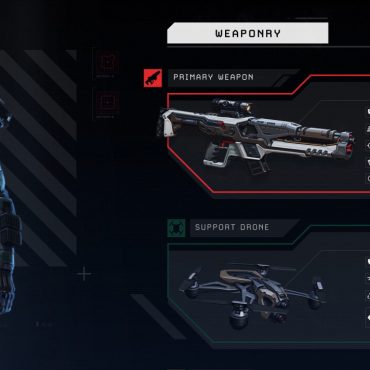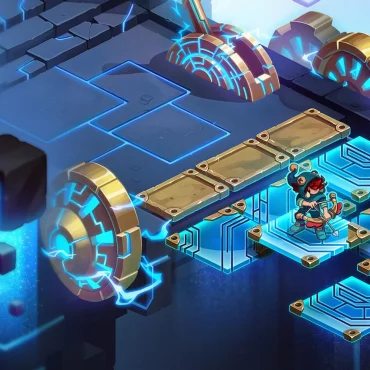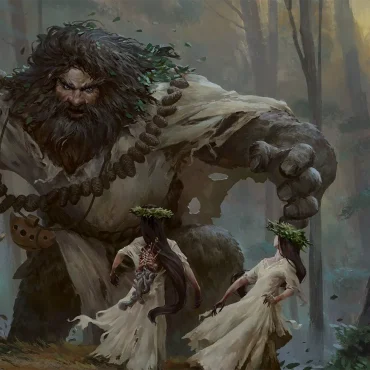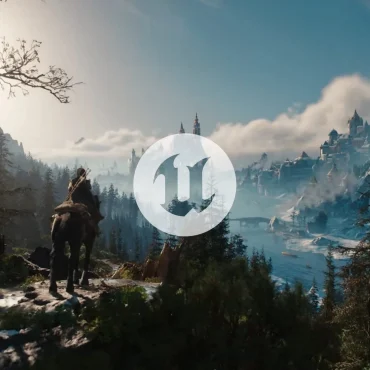There are thousands of 3D/2D game artists around the globe ready to take on your project, so it might be easy to hire game artist, right? Of course, but only if you know what exactly you are looking for. In this guide on how to look for game artists for hire, we’ll discuss why it is important to be certain about hiring destination, different specializations of artists, portfolios, and differences between game studios and freelancers.
Choose a Hiring Destination
The country/region you wish to hire your artists from plays a determining factor in a project’s budget. Price policies vary drastically across countries, and often a piece of work completed in Europe will cost of magnitude smaller amount than it would in the US. For instance, an average salary of a 3D game artist in the US is $87,227 and $81,938 in Australia, while in Poland the average yearly income of the same specialist is $16,791, or $14,642 in Ukraine. The higher salary, in this case, is not about skill level but about the regional economy, prices, bills, cost of living, and so on. Let’s just remember the gorgeous Witcher 3 game or photo-realistic S.T.A.L.K.E.R. 2 or Metro Exodus – games that were produced in Poland and Ukraine.
Another thing about hiring destination is that it also determines how well the communication will be (in terms of language barriers), cross-cultural understanding, and time zones.
What Specialist Do You Need for Your Project?
Once you’ve decided on a hiring destination, the next question is what exactly do you need an artist for? Since both 2D and 2D Artist are general names of far broader professions with lots of branches and specializations. For instance, an Environmental Artist probably won’t create a Kratos-like character for your game, since it’s the job of a 3D Character Artist. As well as UI/UX artist won’t create Blizzard-level loading screen illustrations, since it is a job of a 2D Illustrator. So in order to understand which particular game artist for hire you need, let’s see what are their most common proficiencies:
Specializations of 3D Game Artists
3D game artist is a fairly broad concept that includes several areas of computer graphics:
3D Character Artist

3D Character Artist specializes in producing game characters. This artist must know and understand anatomy, visual perception principles, and more. Their main tools are Blender, ZBrush, and Substance 3D Painter. They might also be fluent in software for creating photorealistic portraits (for instance, Mari) and naturalistic clothing (Marvelous Designer).
3D Environment Artist
Environment Artist creates a game environment, and their main task is to enhance the gaming experience and immerse the player in the game’s atmosphere. They use such programs as SpeedTree (for generating vegetation), World Machine (for landscapes), and the most crucial one – Substance Designer. This tool is of particular importance in the work of a 3D Environment Artist since it is used to create procedural environmental materials.
3D Hard Surface Artist

3D Hard Surface Artist creates mechanisms, weapons, and vehicles. The engineering experience of an artist is a big plus in this case. Such a specialist has a deep knowledge of CAD programs (for instance, Fusion 360) to work on complex mechanical designs that require special precision.
3D VFX Artist
3D VFX Artist makes 3D visual effects. They contribute with the final touches to the visual aesthetics of the project. These 3D game artists are proficient with FX programs, such as Houdini, or 3D editor plugins that replace them. They also use particle and effects editors for all major engines, as well as classic renderers (in the case of cinematics).
3D Texture Artist

3D Texture Artist creates materials for 3D models. Substance Designer, Substance Painter, and Mari are the main tools of this specialization. A trained eye for the parameters of real materials is important here, as well as the ability to replicate them realistically. In addition, it is imperative for this 3D game artist to know the principles of how materials work for classic renders, cinematics, and physically based rendering.
3D Technical Artist
3D Technical Artist plays a role of a link between 3D game artists and developers. They must thoroughly know the whole process of displaying 3D graphics at the hardware and software levels. Ideally, this artist understands how shaders work, and knows the features of the main game engines (UE4, Unity), as well as ways to optimize 3D graphics elements and their impact on performance.
3D Generalist
3D Generalist is engaged in a wide range of work. This is a specialist with the largest possible set of skills and mastered programs. This type of artist is ideal for indie projects and small studios, where an artist is a versatile fighter. 3D Generalist is able to model, draw concepts, make effects and animations, deal with interfaces, and so on.
Specializations of 2D Game Artists
2D artists’ job is more about artistic proficiency and creativity than about software knowledge. The main tool used by a 2D artist is Adobe Photoshop, which they know like the back of their hands. The additional tools are Adobe Illustrator, Corel DRAW, ZBrush, etc.
And similarly to a 3D game artist, a 2D game artist is not an ultimate job title. Concepts, illustrators, character artists, and other creative guys are all separate specializations of 2D art production. Let’s see them all below:
Concept Artist

It all starts with concept art. Whether it’s a character, a location, or an entire game, you first need to decide what it will look like. Concept art doesn’t have deep detail: it’s about sketches, not finished drawings. And it’s also about variability and looking for a perfect form. Concept artists do not have months to competently render all the options they have come up with.
Concepting is a high-skill level task since the concept makes a base for all other steps in a pipeline. That is why concepts are mostly created by IP owners in-house.
2D Illustrators
Promo art, unlike concept art, is crisp, polished, and created late in production when the entire design has been approved. 2D Illustrators create all the static images: loading screens, covers, advertising posters, and postcards. These 2D game artists have a huge number of tasks, and therefore they need to understand literally everything: anatomy, perspective, composition, color, design, and detailed rendering. Their ultimate goal is to grab your attention and tell a story.
UX/UI Artists
While the locations and characters are being worked on, UX/UI artists are creating the interface. They follow two main principles in their work: convenience and invisibility. The player should not be distracted from the gameplay by a bunch of windows and messages, and it should be intuitively clear what to do in any proposed situation. UX/UI artists are proficient in User Psychology and the behavioral patterns of a product’s users.
2D Generalists
2D Generalist is Jacks of all trades in 2D art production. These artists can do everything in general: draw icons, adapt concepts for the game, create illustrations, and so on. Again, it is a usual choice for indie and low-budget projects with a small team of artists.
Carefully Study Portfolio

Now that you know which particular specialized artist you need for your project, it’s time find one. Always look for artists that have a rich portfolio of works that correspond to the style you need for your game. If an artist is proficient in realistic art creation (like in The Last of Us, Metro, Assassins Creed), then they will not suit well for game projects with stylized art (like in Hollow Knight, Disco Elisium, Ashen, etc.).
Here are the most popular platforms where you can look for 2D & 3D artists’ portfolios:
Artstation
Artstation is one of the largest professional communities where you can find all kinds of graphic content. There is a convenient system of distribution by categories, topics and projects.
CGSociety
This site is a little less popular than the previous one, but it is primarily focused on three-dimensional graphics.
ZBrushCentral
ZBrushCentral is another site for 3D artists. Most of the submitted work relates to character design.
Behance
Behance is a resource for a wide range of creative activities, from interface design to 3D graphics.
What’s Better: Game Studio or Freelancers
A freelance 3D/2D artist is a good choice when there is a small scope of work that needs to be done within a short period of time. You can choose the one artist whose portfolio perfectly suits the needs of your projects and negotiate a price and duration of cooperation. If you stumble upon a reliable freelancer with decent art production skills, you might work with them for a while, offering orders from time to time.
There are many platforms to find game artists for hire, including the most popular ones: Upwork and Freelancer.
Game studios cover all the benefits that an individual freelancer can offer, with the exception that they sometimes won’t accept projects with a too small scope. In turn, game studios suit best for larger and long-term projects. A studio can secure your art production pipeline, and ensure consistency of art at each delivery. Studios always have senior staff like Art Directors and Lead artists who do supervision and ensure strong internal QA.
And what is hugely important, a studio can ensure the quick scale of a dedicated team. Hiring a team of artists at game studios considerably saves time since these companies have vast experience managing art production projects and know exactly which artist is needed for a particular task. Moreover, large game studios have experienced recruitment departments and can quickly grow with your project and adapt to your rising needs.
Here’s our list of top 15 art production companies, where you can find your perfect candidate.
Hire 3D Artists & 2D Artists at N-iX Game & VR Studio
N-iX Game & VR Studio is a game art production company with more than 10 years of industry experience and a team of 240+ professionals. Our art production services assist Supermassive Games, Paradox Interactive, Wargaming, CI Games, and other eminent game development companies. N-iX studio’s artists have contributed to some of the industry’s top projects.
As your art production partner, we offer you the following benefits:
Large Team of Diverse Specialists
N-iX game studio’s team consists of 65 + skilled 2D game artists that work under the creative supervision of Art Directors, 20+ skilled professional animators & riggers, MoCap animators, VFX artists, and a large team of 3D game artists that have created over 1000+ 3D assets for our partners. Thus, whether you need realistic or stylized art for your game, illustrations or UI, 3D character or high-quality texturing, our studio likely has the right professionals for you. Also, we offer end-to-end to art production support for large-scale projects: starting from concepts to 3D modeling, animation, etc.
Recruitment Department and Strong Company Brand
We can quickly adapt to your needs and scale along with your projects. If your game needs a certain specialist/s, our recruitment department will apply tried and tested recruiting approaches to hastily find the right candidate and fill the gap in expertise. Being recognized by Forbes as one of Ukraine’s top employers and ranked second in the Best Company to Work in 2021 list, N-iX has an exceptional employer brand.
Vast Array of Game Development Services
In addition to art production, N-iX game & VR Studio offers a vast array of game development services, including Unity / C++ / Unreal Engine development, XR and Cloud solutions, full-cycle development, co-development, blockchain solutions, etc.





